Unit 21: Sleep Tips for Children with Autism in Early Intervention Program
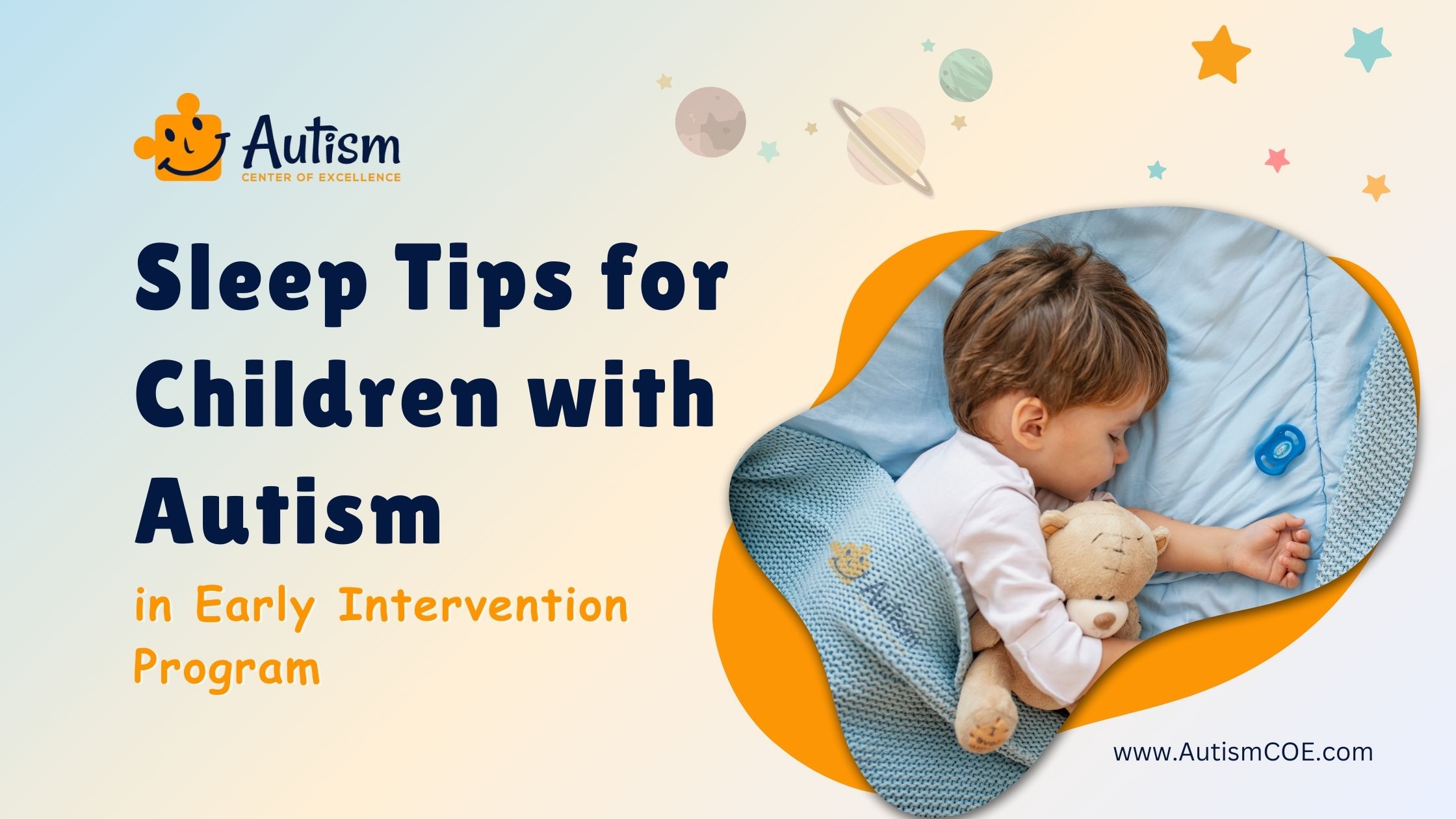
Sleep is a fundamental component of a child’s health and well-being, yet many Parents, caregivers, and therapists encounter significant challenges when it comes to Autism and Sleep Issues, particularly in relation to child sleep. The specific set of sleep-related challenges that children with Autism Spectrum Disorder (ASD) frequently face – known as autism sleep disorders – can have a detrimental effect on their quality of life. Sleep issues are widespread, with reports of up to 80% of children with ASD experiencing them.
Good sleep hygiene is crucial for children with autism to help manage these sleep challenges effectively. Anyone working in the development and care of children on the autism spectrum must have a thorough understanding of sleep difficulties associated with the condition. This blog post will explore several approaches and practical Sleep Tips for Children with Autism in Early Intervention Programs. The article will discuss how to recognize sleep issues linked to autism and look at practical sleep training techniques. With a focus on realistic solutions and Early Intervention Strategies, this article will equip you with all the information and tools required to improve the sleeping environment for kids with autism.
Why Do Children with Autism Struggle with Sleep?
When it comes to sleep, children with autism often have great trouble; so, the first step in properly addressing these issues is knowledge of these problems. Common links between autism and sleep problems, sensory sensitivity, anxiety, and irregular melatonin synthesis are found to be Children with Autism Spectrum Disorder (ASD) may be hypersensitive to external stimuli including light, sound, and texture due to sensory sensitivities, which causes Autism Sleep Disorders that disturb the natural sleep pattern.
It is important to understand how much sleep children with autism typically need and how it may vary. According to recommendations from authoritative sources like the National Sleep Foundation, while there are general guidelines for sleep duration, individual needs can vary significantly among children with autism.
Anxiety also plays a significant role in Autism Sleep Problems. Many children with autism have increased degrees of anxiety, which can keep them from unwinding and relaxing before bed. Furthermore, aggravating sleep problems in autism is Irregular Melatonin Production since many autistic youngsters have aberrant levels that make it challenging for them to go to sleep and stay asleep. Melatonin supplements and other Autism Sleep Tips in early intervention autism treatments help to address these underlying reasons and enhance sleep patterns.
Common Sleep Issues in Children with Autism
Various studies have documented that children with autism suffer from one or multiple sleep problems that have adverse effects on their health. Some of the most prevalent Autism and Sleep Issues include:
Difficulty falling asleep: It is common for children with ASD to stay awake for long at night, and this can be attributed to the fact that they do not know how to calm down at night.
Frequent night wakings: Night waking may cause children to wake up severely during the night, this makes the children get little interrupted sleep.
Difficulty staying asleep: Many children with autism not only struggle with falling asleep but also with staying asleep throughout the night, leading to fragmented sleep.
Early morning awakenings: Some children with autism develop an early morning awakening pattern and are unable to go back to sleep, leading to a lack of sleep.
Such ASD Sleep Problems make it difficult for parents and caregivers to form a cycle of sleep that has a positive impact on the child. These Autism Sleep Disorders can be managed with proper Sleep Strategies for Autism like having a regular bedtime and a comfortable and quiet sleep room setup. Early intervention sleep techniques for sleep disorders relating to autism are important in assisting children to achieve longer and restorative sleep.
Factors Contributing to Sleep Difficulties in ASD
There are numerous reasons why children with autism may have trouble falling asleep, including: Key factors include:
Sensory Sensitivities
Consequently, Children with ASD may experience Sleep Issues because they have light sensitivity or sensitivity to sound, or texture.
Anxiety
Consequently, Children with ASD may experience Sleep Issues because they have light sensitivity or sensitivity to sound, or texture.
Irregular Melatonin Production
Sleep Problems in children with autism can be attributed to abnormal levels of melatonin – the hormone that regulates the sleep-wake cycle.
Co-occurring Conditions
Sleep Disorders make it difficult for children to sleep, and underlying conditions such as ADHD make it even more probable that the child will not get a good night’s sleep.
Such issues can be addressed and solved by deploying Sleep Strategies in Autism to enhance sleep quality.
How to Diagnose Sleep Disorders in Autistic Children?
The assessment of sleep disorders in Autism entails the use of comprehensive strategies that have rich respect for accommodating each child’s sleep and their difficulties. To start, parents, caregivers, and therapists must monitor any anomalies in the kid’s sleep pattern without interfering. It is useful to maintain a detailed record of sleep patterns through a sleep diary to document frequent bedtime refusal, night awakenings, and early morning waking.
If sleep issues persist, consulting a sleep specialist may be necessary for effective treatment.
Getting medical advice should be an important aspect of determining the diagnosis. Primary care clinicians, pediatricians, or sleep specialists who ask specific sleep history questionnaires intended to recognize ASD. It is claimed that these tools can yield data on the specificities of ASD Sleep Problems and support the development of Sleep Strategies in children with ASD.
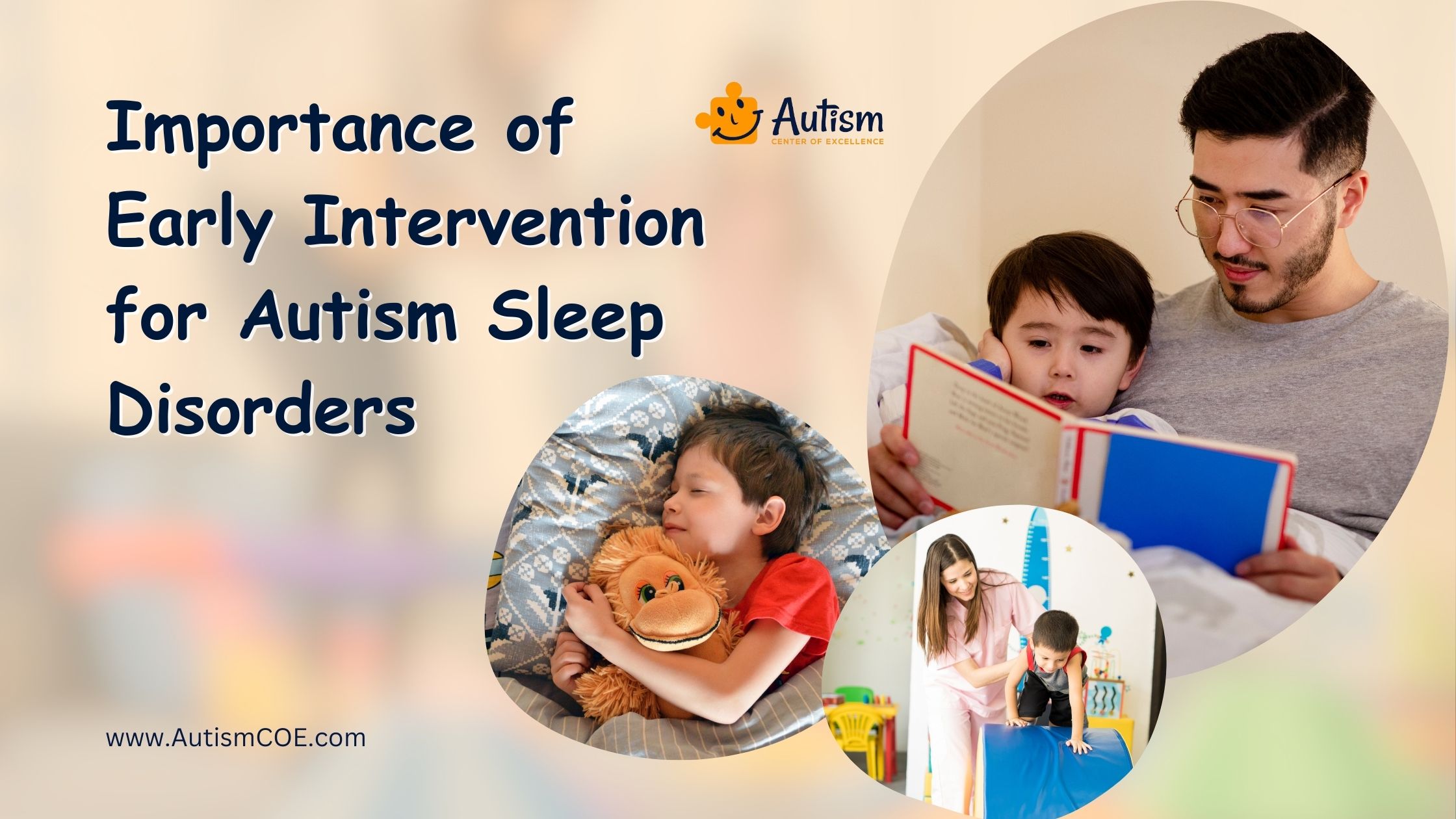
Importance of Early Intervention for Autism Sleep Problems
Autism Early intervention is crucial in addressing sleep issues, offering significant benefits for children with ASD. Early Intervention Autism Sleep management offers ways by which this impairment can be managed thus improving the quality of sleep at night and hence the quality of daytime functioning. Through an early intervention to Address Autism Sleep Problems, Parents ought to enable children to set up the Right Sleeping Pattern that will not only fulfill developmental needs but also minimize the effects of sleep loss. Establishing consistent bedtime routines is also essential in early intervention, as regular bedtimes and positive sleep associations can significantly improve sleep quality and overall well-being.
The strategies of early intervention for sleep disorders in children with autism aim at providing individually tailored approaches required. This can entail developing a fixed sleep schedule together with other environmental factors such as lighting and noise; as well as the right proper sleep training technique to be used. Interestingly, these early intervention sleep tips do not only help in changing the child’s sleep schedules but also promote the overall stability and productivity of children with autism, thus, the continuous improvement of their quality of life.
Establishing a Consistent Bedtime Routine
It is crucial to optimize a bedtime schedule when treating sleep disturbances in Autism Spectrum Disorders. Hence, parents and caregivers of kids with such issues should ensure that the child observes a proper sleep schedule that falls within his/her natural rhythm to help them fall asleep more easily.
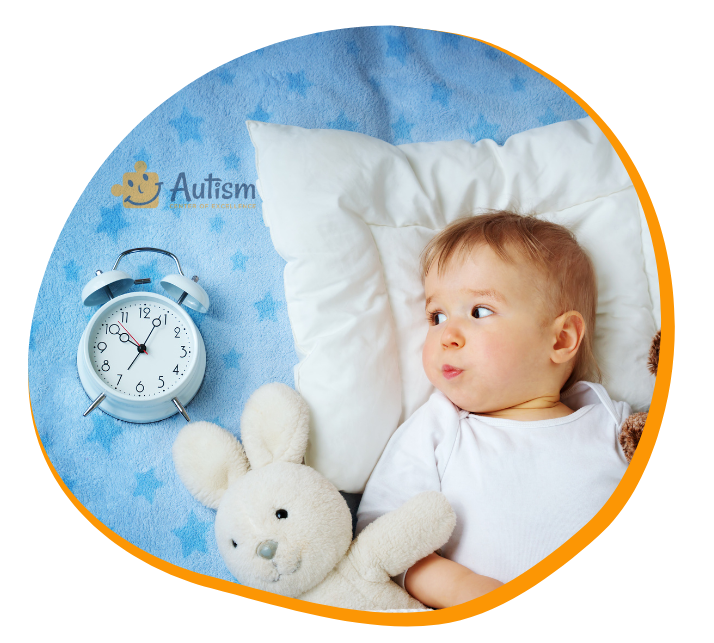
For instance, if a child sleeps well at 9 p.m., they must be put to bed at that time every night. Give the child the signal that it is time for relaxation and include in its routine calming activities like reading a favorite book, taking a warm bath, etc. Visual schedules can benefit children with autism because they give them a clear picture of the events that are set to happen next; thus, they will not resist the events that are expected to happen next.
In like manner, these Sleep Strategies for Autism change bedtime into a more predictable period of the day to manage Autism Sleep Problems efficiently.
Creating a Sensory-Friendly Sleep Environment
For instance, if a child sleeps well at 9 p.m., they must be put to bed at that time every night. Give the child the signal that it is time for relaxation and include in its routine calming activities like reading a favorite book, taking a warm bath, etc. Visual schedules can benefit children with autism because they give them a clear picture of the events that are set to happen next; thus, they will not resist the events that are expected to happen next.

For instance, the implementation of blackout curtains can eliminate any extraneous light while white noise machines or soft relaxing music can eliminate any distractions sounds. Also, having weighted blankets or soft firm bedding can give the kind of input some children require to feel secure.
By controlling the kind of environment that the child is put to sleep in based on their sensory preferences, parents can be able to help their child have a better sleep so that he or she can have better health at the end of the day.
Incorporating Relaxation Techniques
Light exposure can significantly disrupt sleep, especially for children with autism who may be more sensitive to light. Reducing light exposure in the bedroom is essential for promoting better sleep and creating an optimal sleep environment.
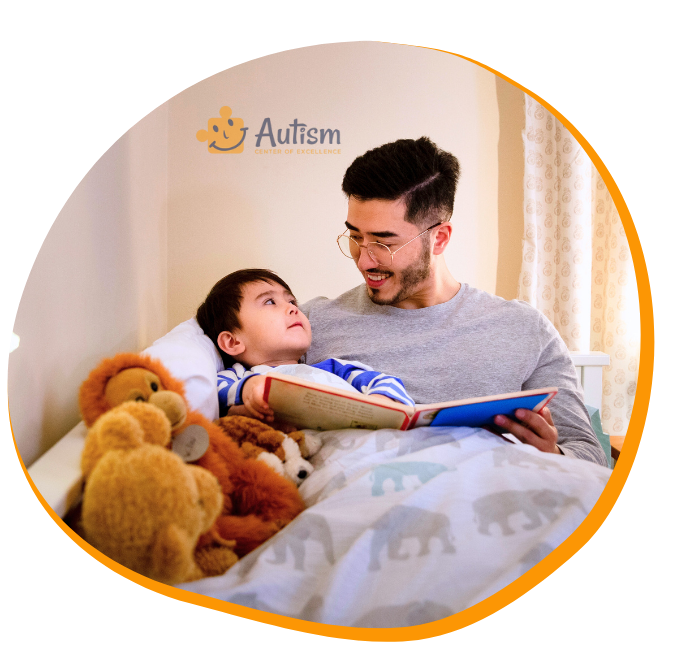
Here are some ways to reduce light exposure in the bedroom:
Blackout Curtains or Shades: These can block out any light from the windows, creating a darker and more conducive sleep environment.
Dim Red Lights or Nightlights: Installing dim red lights or nightlights can provide enough illumination for comfort without being overly stimulating.
Avoiding Screens: It’s important to avoid screens (such as TVs, tablets, or smartphones) at least an hour before bedtime, as the blue light they emit can interfere with sleep.
Sleep Mask or Earplugs: Using a sleep mask or earplugs can help block out any light or noise that may be disrupting sleep.
By reducing light exposure in the bedroom, children with autism can sleep more soundly and wake up feeling more rested and refreshed.
Managing Diet and Physical Activity
Autism and sleep-related matters can be well handled through diet and exercise. Parents should ensure that the child avoids taking products containing caffeine and sugar in the evening as they have been known to have negative effects on the child’s sleep.
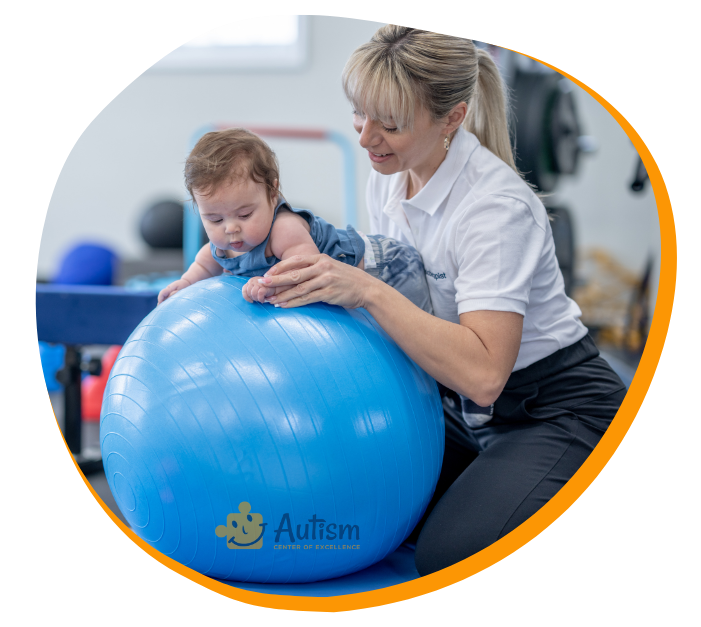
If the child easily wakes up hungry, it is recommended to free him for a light and healthy meal in the evening, for example, eat a banana or a small bowl of oatmeal. Also, physical activity during the day assists children with autism to use energy and, hence, sleep better at night.
For example, incorporating a daily routine that includes ample outdoor play or structured activities can significantly improve sleep quality. These ensure that both diet and exercise are optimized to support healthy sleep patterns.
Addressing Nighttime Wakings and Sleep Disruptions
Nighttime wakings and sleep disruptions are common Autism Sleep Disorders that require specific strategies. If a child wakes up frequently during the night, parents can create a plan to respond consistently and calmly. Autistic children often experience more restless sleep and anxiety compared to other children, which can impact their overall health and well-being.

For instance, gently guiding the child back to bed with minimal interaction can help them understand that nighttime is for sleeping. It can also help to use a visual schedule for the child, as this may serve as an indicator of what is going to happen if the child wakes up during the night. Also, the safety and comfort of the place where one sleeps will help in the elimination of anxiety that results in wake-up calls.
These Autism Sleep Tips in Early Intervention Programs are essential as they help address and minimize the sleep disturbances of children with autism for better quality sleep.
Behavioral Interventions and ABA Strategies
ABA interventions, including behavioral techniques, are effective in the Treatment of Sleep Disorders in Autism. Applied Behavior Analysis (ABA) techniques deal more with understanding behavior patterns and improving with Positive Reinforcements and schedules.
For example, developing a well-ordered manner, which is followed every night can be beneficial and can help the child with ASD know what is going to be expected of him/her next so that he/she does not protest.
Rewarding with words or a small incentive for sleeping on the bed, is likely to help promote correct sleep behaviors. These Sleep Strategies for Autism give parents, caregivers, and therapists working with autism, ideas on how to address Autism Sleep Disorder and improve sleep.
Adopting the above sleep tips in Early Childhood Development Plans helps children to have better sleeping patterns in the long run.
Enjoying Reading?
Join Our Weekly Newsletters!
Subscribe now to stay updated with our latest email updates.
Frequently Asked Questions & Answer
Why Does Your Autistic Child Wake Up in the Middle of the Night?
Many children with autism may wake up due to certain sensitives, anxiety, irregular production of melatonin, and other co-existing disorders such as ADHD. The following can be attributed to disruptions, and the rollout of Autism Sleep Training can assist in tackling them.
How Can I Create a Calming Bedtime Environment for My Child with ASD?
To minimize distractions, one should eliminate light, employ noise-reducing devices, and ensure they are comfortable by having the right type of sheets on their bed. Develop a consistent signal related to sleep that would not be a signal for wakefulness, such as reading a book or a warm bath before sleeping.
When Should I Consult a Healthcare Professional About My Child's Sleep Issues?
If your child with autism experiences sleep disorders, such as difficulty falling asleep at night, waking up during the night, or waking up early in the morning that interferes with daytime activities, talk to your pediatrician.
How Can Sensory Sensitivities Affect Sleep in Children with Autism?
Sensory processing disorder makes it challenging to form a comfortable sleeping environment because children with this condition are very sensitive to light, sound, and textures. Considering these sensitivities, it is possible to enhance the quality of sleep when applying Sleep Strategies for Autism.
Conclusion
Addressing sleep problems in children with autism in time can have profound benefits on their overall health and development. Behavior modification strategies, including bedtime, setting sensory environments, practicing relaxation procedures, proper diet and exercise, and especially ABA Therapy, can help parents, caregivers, and therapists successfully manage autism and sleep problems.
These useful recommendations will help parents solve the most frequent ASD sleep issues and provide the child with the necessary amount of sleep. Early Intervention Autism Strategies focused on sleep should be considered effective because they involve the development of ideal strategies that can provide autistic children with better sleep quality and therefore increase their overall quality of life.
Please Note: The content of this blog is for informational purposes only and should not be considered a substitute for professional medical advice, diagnosis, or treatment. Consult a qualified healthcare professional for personalized guidance tailored to your specific situation.

Bhavika Bhasin
Bhavika Bhasin is the Research and Marketing officer at AutismCOE. She works with children and adults with ASD. Her clinical research includes evaluating various available autism screening and diagnosis methods and their efficacy. She is currently developing a novel screening exam that is indicated to be more accurate than the existing available exams. She is also writes articles papers for various publications.

